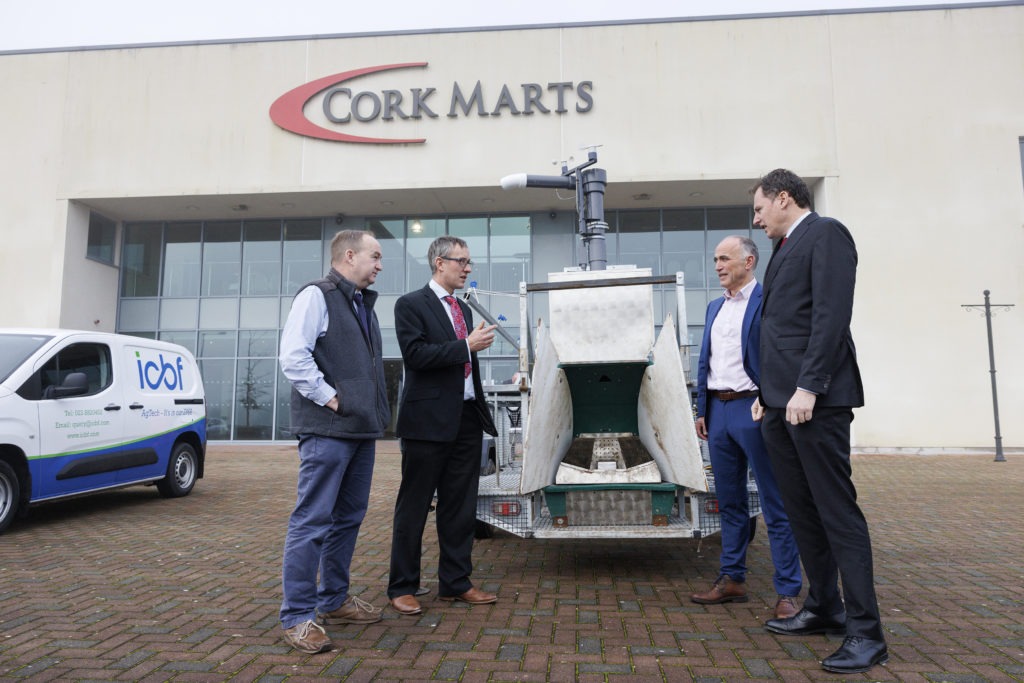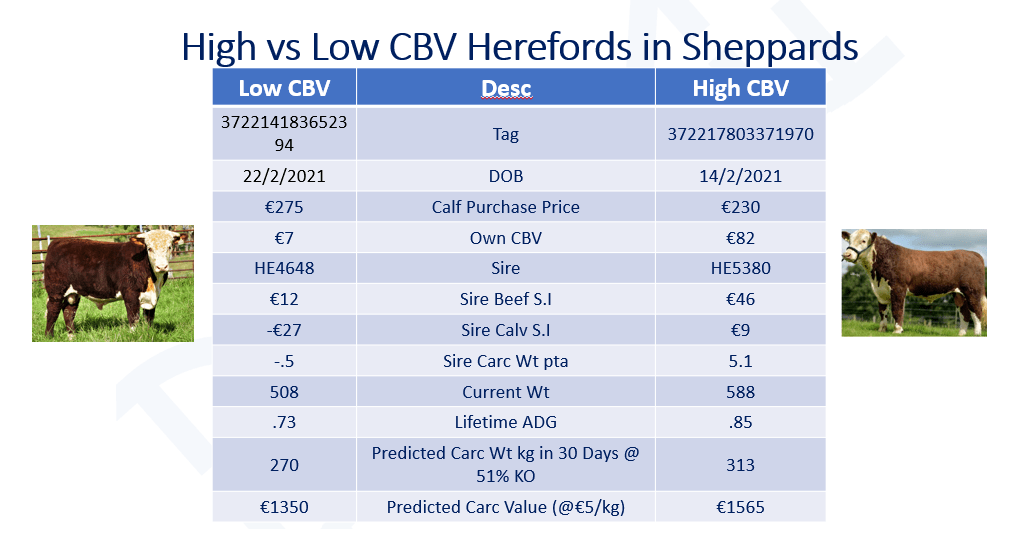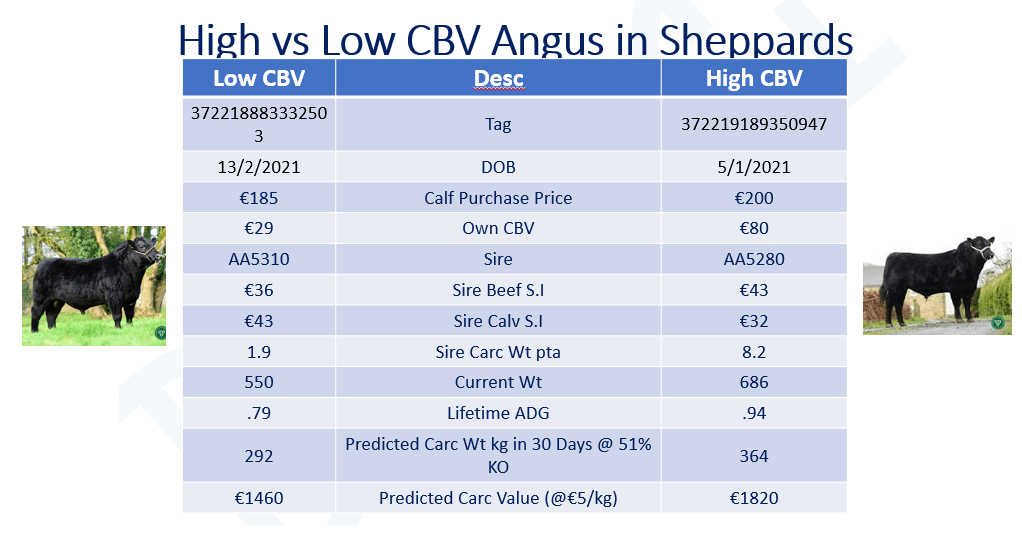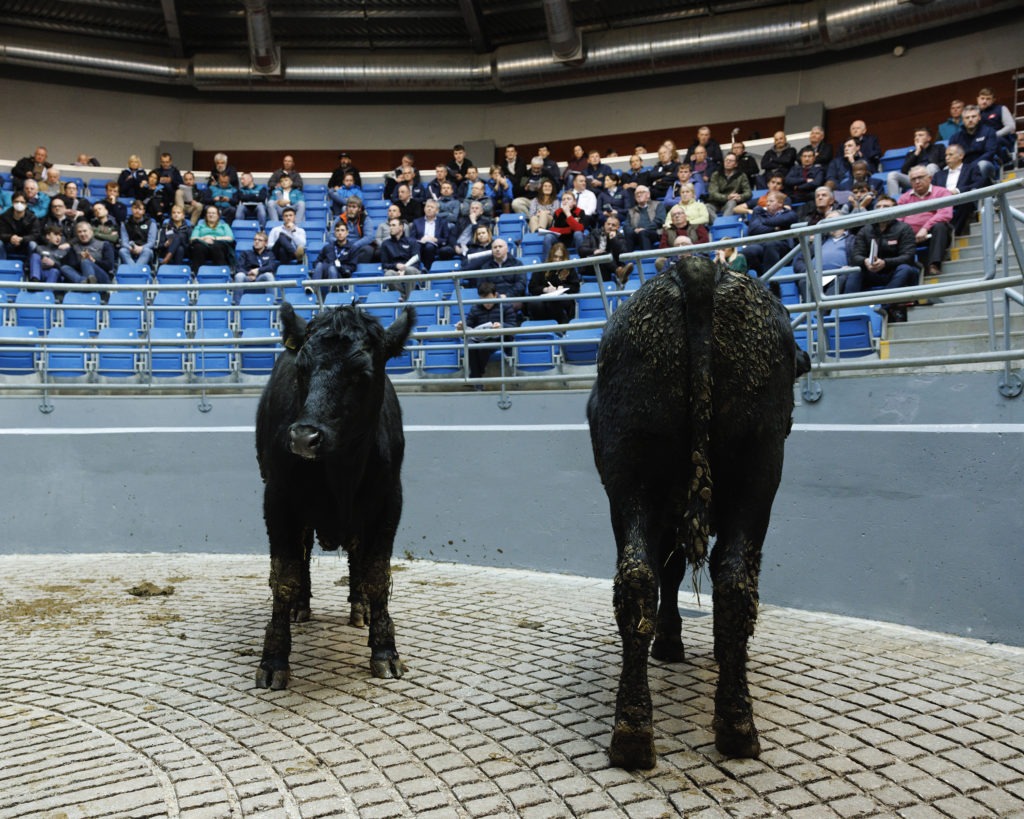Laurence Shalloo, Teagasc, Michael Doran, Chairman ICBF, Andrew Cromie, Technical Director, ICBF and Minister for Agriculture, Food and the Marine, Charlie McConalogue launching the Carbon Sub Index in the EBI at the ICBF event in Corrin Mart, Fermoy, Co Cork. Photographer Donal O’Leary
At this point, we are all aware of the challenges we face across the globe with regard climate change and Greenhouse Gases. In Ireland, we have set ourselves goals to reduce carbon emissions by 2030 and again by 2050. Ireland must reduce greenhouse gas emissions by 50% by the year 2030. Of this 50% decrease, Agriculture has been tasked with reducing greenhouse gases from the sector by 25%. Of the 5.75 Mt of CO2e that agriculture must reduce in emissions, genetics specifically has been tasked with reducing 1.2Mt CO2e of this – with the dairy herd accounting to 60% of this reduction. Our newest updates to the EBI will be the catalyst that will reduce the national herd’s total emissions.
Wednesday, 16th November saw a successful launch of the new Carbon Sub-Index, updates to the Beef Sub Index Health Sub-Index and Genomics for minor breeds. Industry and farmers in excess of 300 attended the event in Corrin Mart From the 22nd of November, these improvements will be included in the Economic Breeding Index (EBI). The purpose of these updates is to accelerate the rate of genetic gain in the national herd by breeding more efficient and environmentally friendly dairy cows.
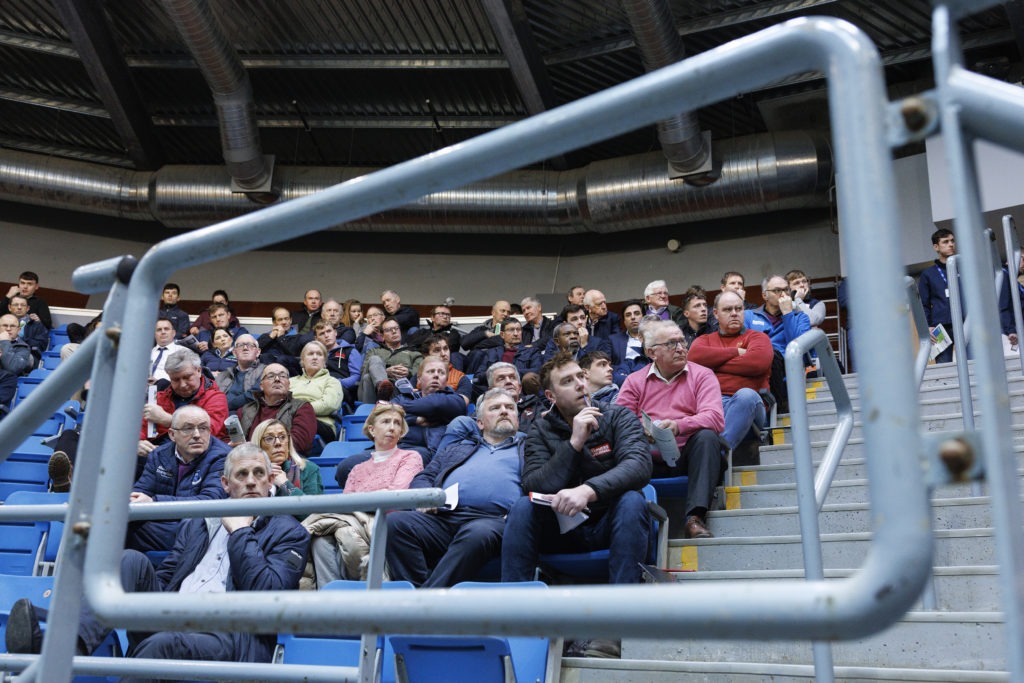
ICBF CEO, Sean Coughlan opened proceedings followed by Minister of Agriculture, Charlie McConalogue discussing the challenges currently facing the sector and how he believes that Ireland will become a leader in reducing emissions in agriculture worldwide.
Minister McConalogue stated,“this carbon sub index is a world first and highlights that Irish farmers are leading the way when it comes to climate action”. He also commented on the excellent collaboration within the sector; “I am delighted to introduce these new changes to this index, changes that have been brought about through extensive research and collaboration between ICBF, Teagasc, Abacus Bio. Collaboration such as this, is what the global climate community today is yearning for”.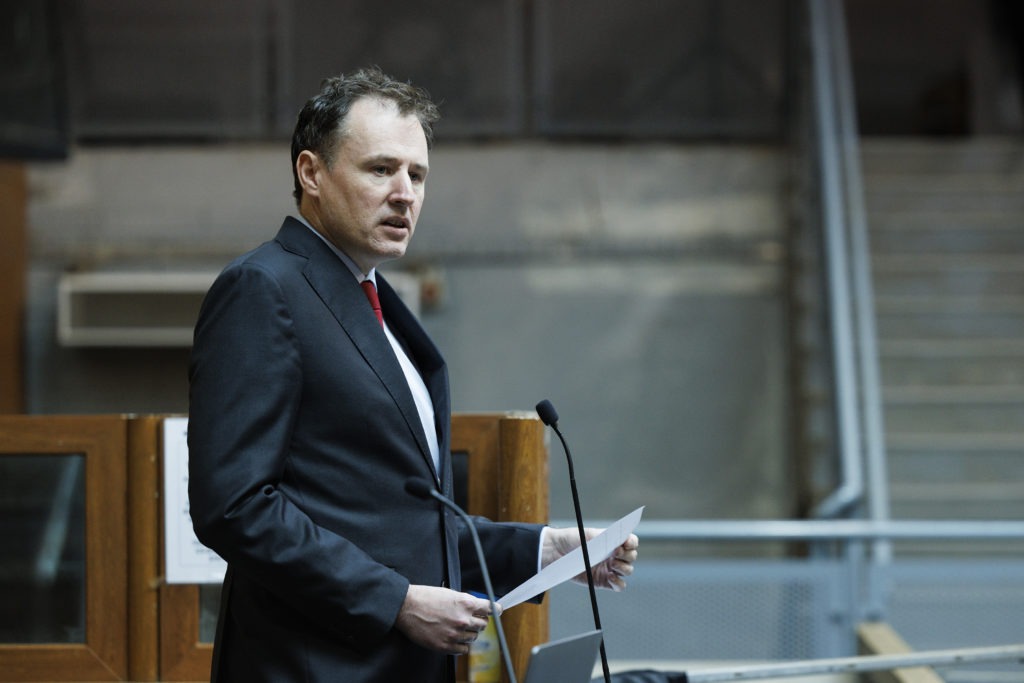
Minister for Agriculture, Food and the Marine, Charlie McConalogue launching the Carbon Sub Index in the EBI at the ICBF event in Corrin Mart, Fermoy, Co Cork.-Donal O’ Leary
Dr. Jonathan Herron (Teagasc) was the first speaker and he introduced the new Carbon sub-index by highlighting the need for GHG reduction, how GHG’s are calculated and how this relates to the new updates in the EBI. As stated by Minister McConalogue, Herron echoed that Ireland is the first country in the world to incorporate carbon directly into their national breeding index. Concentrating on total emissions rather than emissions intensities will enable us to have a bigger impact on our 2030 goal of a 25% reduction of total emissions. Until now, emissions have been calculated as emission intensities, whereas total emissions are a more accurate measure. The new Carbon sub-index will increase the economic weight of traits that reduce emissions (Calving Interval, Days to Slaughter) and reduce the economic weight of traits that increase emissions (Milk, Fat & Protein). The Carbon sub-index will account for 10% of the overall EBI, aiding in the breeding of a more efficient animal and system.
Cick here to view Jonathan’s presentation
Dr. Alan Twomey (Teagasc) was next off the mark with the updates to the Beef Sub-Index. He highlighted that there has been a 5Kg reduction in carcass weight and 0.2 unit reduction in conformation over the past 10 years. With the changes to legislation around live exports, the quality of beef coming from the dairy sector needs to improve as dairy bred animals currently account for 57% of the national beef kill.
Implementing the updates to the Beef sub-index will work towards producing a higher spec carcass from the dairy herd destined for slaughter while also improving efficiency in getting animals to slaughter. These changes are coming in the form of the new age to slaughter which will be part of the beef sub-index, as well as changes to in-spec carcass traits. This will help to increase the number of animals reaching slaughter weight and specification at a younger age. Reducing the age of slaughter by even 1 month can result in a a reduction of 250Kg CO2e per head. Approximately 700,000 dairy origin animals were slaughtered last year, if each animal took 1 month less to reach slaughter this would have a major impact on national emissions.
Click here to view Alan’s presentation
Dr. Margaret Kelleher (ICBF) finished off the morning session then with a rundown of why we are changing the index and how important these changes are for the future.
- We will now be able to select directly for lower GHG emissions which will further our progress to reach our goal of a 25% reduction in GHG emissions.
- The updates to the Beef sub-index will mean that calves coming off the dairy herd will be of greater quality, and will reach slaughter weight earlier with a higher carcass spec.
- We are including SCC and TB in the health sub index. By breeding for reduced SCC in milk, we can continue to produce some of the highest quality dairy globally, while maintaining profitability.
- TB cost almost €100 million in 2020, and Ireland has the highest rates of TB in the EU. By breeding genetically more TB-resistant animals we can help to bring the rates of TB down across the country.
- Genomics for minor breeds such as Fleckvieh, Brown Swiss, Milking Shorthorns and others will help increase the rate of genetic gain in these breeds, and increase the reliability of proofs leading to better selection of replacement heifers.
Margaret Kelleher concluded her presentation by explaining that with our new carbon sub-index and updates to the EBI that we can be 55% more efficient at reducing our GHG emissions. Currently with the national dairy herd at 1.6million cows, this could equate to 30Kt CO2e per year, or 300Kt CO2e over 10 years. These changes will put Irish dairy at the forefront of sustainable agriculture globally and it will help us to reach our climate goals.
Click here to view Margaret’s presentation
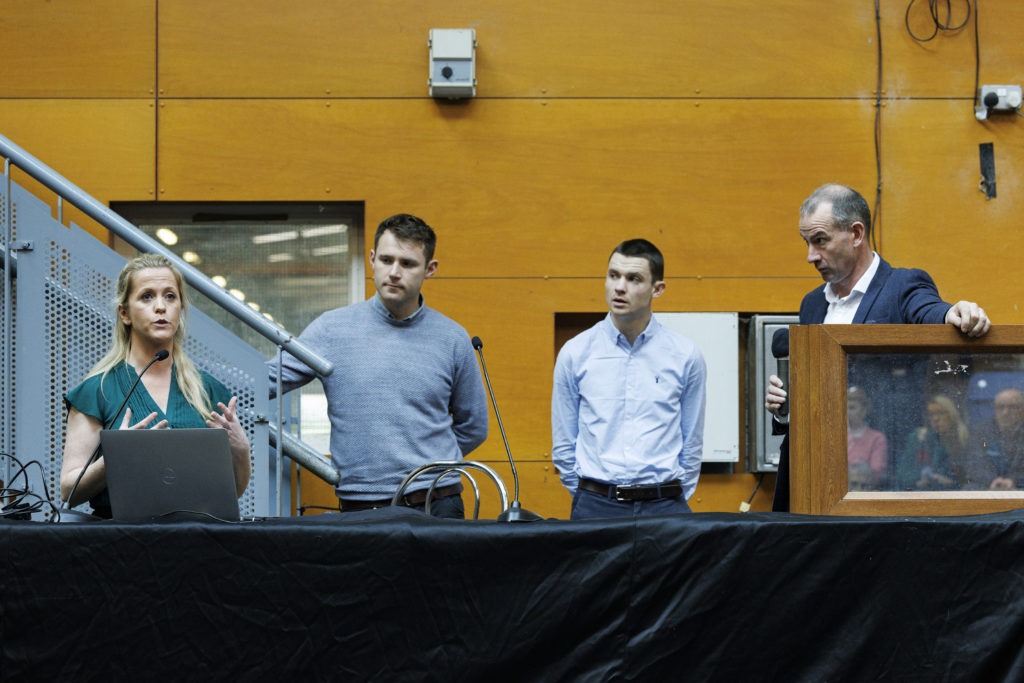
After a short Q & A session with our 3 speakers, Dr Andrew Cromie gave a presentation on the future developments for Dairy-Beef from 2023 onwards. He highlighted that Dairy-beef is not high enough on our agenda, and that there needs to be a shift towards increased carcass merit genetics coming through from the dairy herd. Using high Dairy-Beef Index (EBI) bulls is will certainly have a positive impact. However, as Dr. Alan Twomey alluded to earlier in the day, the bull is only half the genetics of the calf. The records are showing that the beef sub-index in the dairy herd has been declining over the past 20 years. The key for farmers and stakeholders is to identify high EBI sires that are good on the maintenance figure and high in beef merit. He discussed the different roles that genetics plays, along with the broader industry and working with herdowners.
The commercial beef value (CBV) is a new tool designed to increase the genetic merit of calves that are destined for the beef market (not breeding). All dairy, dairy x beef and commercial suckler bred males have a CBV, which will be illustrated on mart boards in the coming Spring. This will be shown for calves that are parent verified (genotyped) to ensure an accurate value is produced. This will then result in more confidence for the buyer, when buying calves as he/she can ensure the sire has been recorded correctly. High CBV animals have been shown to have higher carcass weights, higher kill out % and are more carbon efficient. Dr. Cromie summarised his presentation by identifying the challenges of dairy-beef integration ahead, and how genetics and genomics will play a major role in increasing the confidence and profitability for the calf to beef systems. He highlighted that if we succeed in dairy beef integration we will also be a long way to succeeding in many of the environmental challenges that we are facing.
Click here to view Andrew’s presentation
2 pairs of dairy beef calves were then walked into the ring to highlight the importance of the CBV and high genetic merit sires. Below is the difference in 2 HEX weanlings and 2 AAX weanlings. There is a clear difference between the 2 low CBV and high CBV animals, coming from their sires beef sub-indices.
A large crowd attended the launch of the Carbon Sub Index in the EBI at the ICBF event in Corrin Mart, Fermoy, Co Cork.-Photographer Donal O’ Leary
Our final speaker of the day was Dr. Ross Evans who discussed the ongoing Methane research in Tully and its implementation for the future. He outlined the 4 facilities with GreenBreed machines which are the machines used to measure methane in cattle. The results from these machines are showing clear indications of a genetic variation in methane emissions between breeds and individual sires. He emphasised the need for collaboration between industry members and stakeholders, such as milking parlour manufacturers to increase the rate of data collection, with the goal of integrating all the data collected into the EBI.
Click here to view Ross’ presentation
The event was rounded off by a panel discussion with Dr. Ross Evans (ICBF), Dr. Doreen Corridan (Munster Bovine), Dr. Andrew Cromie (ICBF) and Prof. Dorian Garrick (Massey University) chaired by Dr. Donagh Berry (VistaMilk).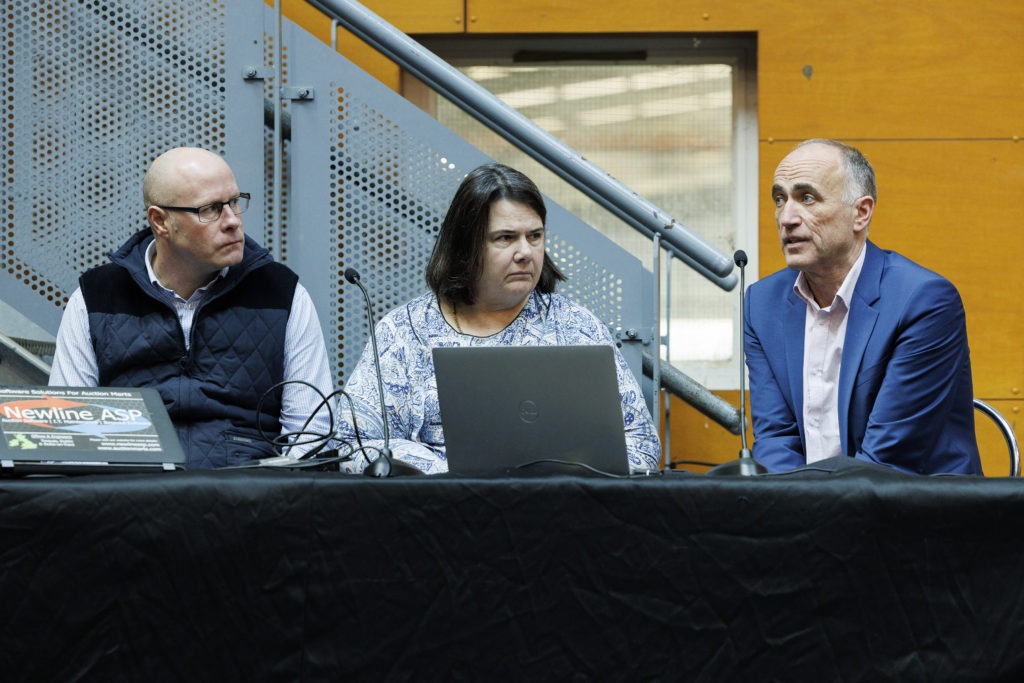
Ross Evans, ICBF, Doreen Corridan, Munster Bovine and Andrew Cromie, ICBF Technical Director answering questions during the launch of the Carbon Sub Index in the EBI at the ICBF event in Corrin Mart, Fermoy, Co Cork.
-Photographer Donal O’ Leary
Garrick commented that over the past 25 years Irish dairy went from having almost no genetic gain to being a world leader in efficiency, productivity and accelerated genetic gain.
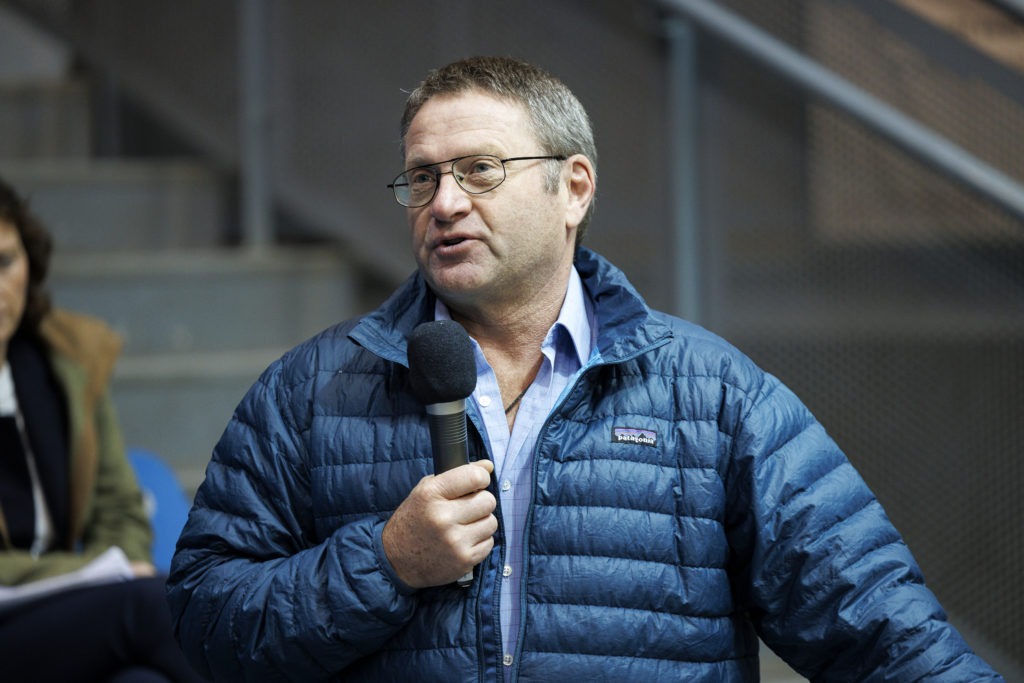
While these changes to the EBI have been relatively minor, they will have a significant impact on the reduction of greenhouse gases in the national herd. Donagh Berry commented on how positive things are here in Ireland, and he reiterated the words of Minister McConalogue by saying “what we have here is an opportunity. The tools that we have available to us here, can help us to face down the climate challenges and turn them into opportunities”.
The messages from the day were simple – globally we have a monumental task to reduce carbon emissions in all sectors, and Ireland is leading the way in doing so. The new updates to the national breeding index will be the cornerstone in Irish agriculture, and key to reducing the emissions from the sector, whilst maintaining productivity and profitability, keeping Ireland at the forefront of sustainability.

In case you missed it, you can watch the event here:

